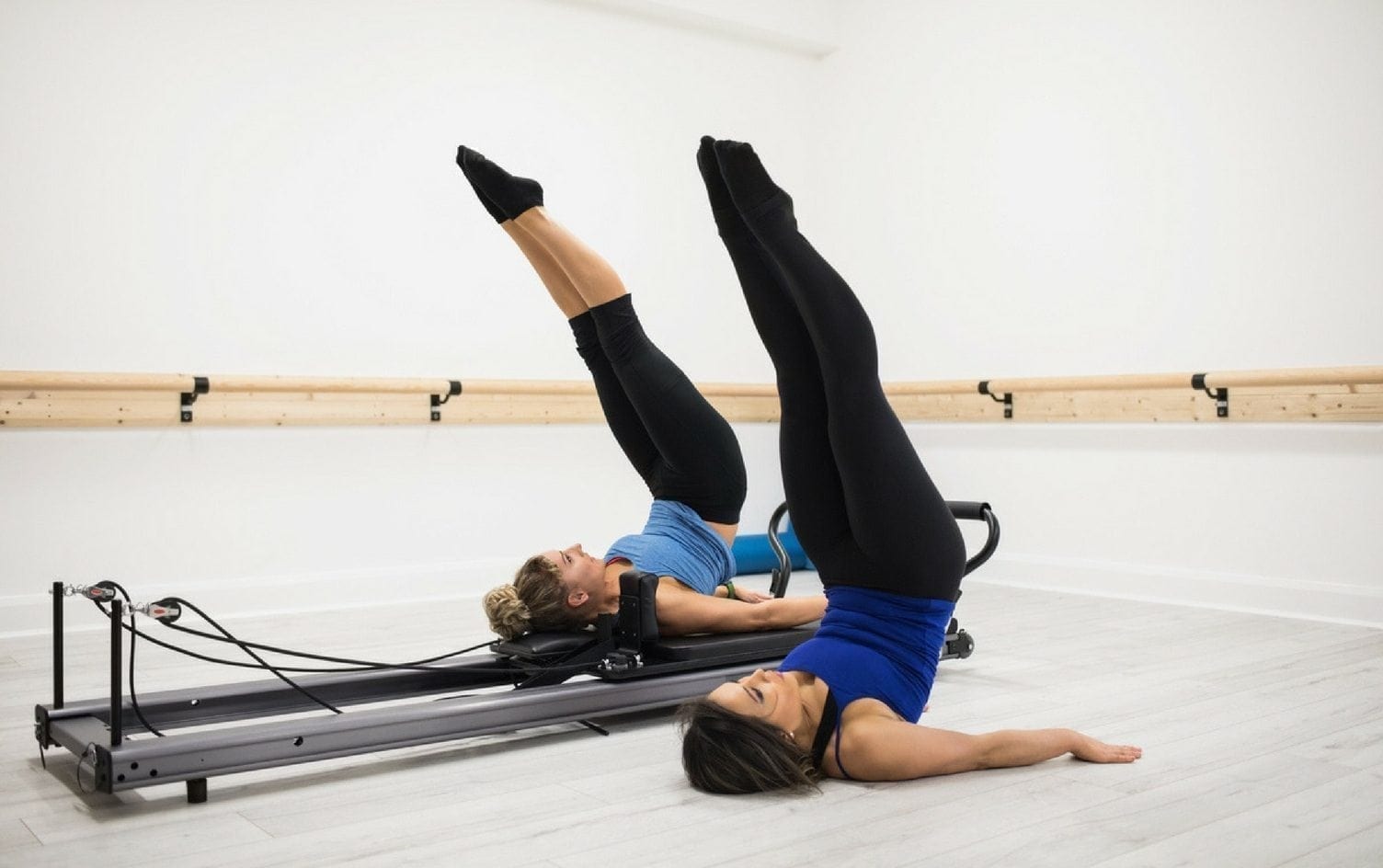If you’re thinking about taking a Pilates reformer class, but not really sure what to expect, you’re not alone. For one, if you walk in believing it’s going to be a slow, easy workout, you’re in for a wake-up call. Pilates classes focus on utilizing the entire body to improve strength, flexibility and even posture. While many of the movements might be small and performed slowly, they’re done to target specific muscle groups, many of which you may never work in your usual fitness routine. And reformer classes introduce a whole other element, too, utilizing the machine to add resistance and leverage to certain exercises.
Don’t read this wrong — Pilates is great for beginners and totally open to all levels of experience, but it might help to know a few things before walking into your first reformer class. We spoke with one of our Pilates experts to get the rundown on what to know before your first reformer experience.
THIS ISN’T A MAT CLASS
While a lot of the foundational movements are the same across Pilates classes, know that when you walk into a Pilates reformer class, you won’t be lying on a mat on the ground. You’ll be performing most of the moves on a Pilates reformer, which is a machine that’s comprised of a carriage that moves back and forth along a track. Said carriage is connected to springs of varying resistance, which provide the weight for the exercises you perform, explains Elizabeth Heidari, Pilates instructor at Flex Studios in New York City. “The biggest difference between a mat and reformer class is this addition of resistance to the exercises,” she says. “This makes moves more intense than they would be in a mat class.”
TIGHT CLOTHING IS BEST
Think: form-fitting tanks and leggings (or tighter T-shirts and shorts). Not only will you be moving your body in all different positions where loose clothing might creep up, but tight clothing allows the instructor to assess your alignment, which in turn allows you to get the most out of the class, explains Heidari.
INVEST IN GRIPPY SOCKS AND GLOVES
You know those socks with little dots all over the soles? Well those dots are actually small rubber grips and these socks were made for classes like Pilates reformer (and barre). The grips provide traction and prevent your feet from slipping on the machine … especially once you start to sweat. There are also gloves available with grips, and while you may think it seems silly, trust us when we tell you that your hands — especially beginners’ — will be sweaty in no time. “Grippy socks and gloves also give you better grip even when you’re not sweating, so you can focus on activating the proper muscles and not crunching your fingers or toes to stay in place,” says Heidari.
EACH SPRING REPRESENTS A DIFFERENT AMOUNT OF RESISTANCE
At the beginning of class, your instructor will explain the machine and all the different parts including the springs, which is where the resistance comes into play. “Most traditional reformers have yellow, blue and red springs,” says Heidari. “Yellow is usually the lightest resistance, blue is medium and red is heavy.” Adding or subtracting springs makes exercises more or less challenging. And don’t worry about deciding which resistance to use — your instructor will shout out the resistance levels, sometimes with options based on experience level, so as long as you listen, you’ll be just fine. Which brings us to the next point …
LISTEN TO YOUR INSTRUCTOR
When you bring the reformer machine into the mix, there’s a lot of moving parts in a Pilates class … especially if you’re a beginner. It’s easy to get lost trying to change resistance, properly place your hands and feet on the platform or using the handles attached to the reformer. “It’s OK to look at your neighbor, especially if they’re a veteran, to get a feel for the position you’re supposed to be in,” says Heidari, “but listening to the instructor first should give you a good indication of where you’ll be on the machine.” Looking around can give you confirmation that you heard correctly!
READ MORE > 7 THINGS I WISH I KNEW BEFORE STARTING REFORMER PILATES
YOUR WRISTS MAY GIVE OUT BEFORE THE REST OF YOUR BODY DOES
Pilates works a lot of the smaller, less commonly used muscles in your body, including the wrists. Many moves have you balancing on your hands, which isn’t a position many find themselves in too frequently (unless you’re doing a plank). “Your wrists have muscles just like any other part of your body,” says Heidari. “It takes work and time to build strength there.” If your wrists really start to fatigue, take a quick break to shake them out and then jump back in.
YOU’LL WORK EVERY MUSCLE
Pilates reformer classes are full-body workouts, so don’t be surprised if the class is harder than you initially thought it would be. Chances are you’ll be working many muscles you don’t use very often. And your core will take a beating. “The core, including your abs, lower back and pelvis are utilized throughout the entire class,” says Heidari. “Whether to stabilize the torso so that the arms and legs can move or as a mobilizer so the ribs and hips can rotate and shift, your core will be activated.” Hey, you wanted a six-pack, right?




